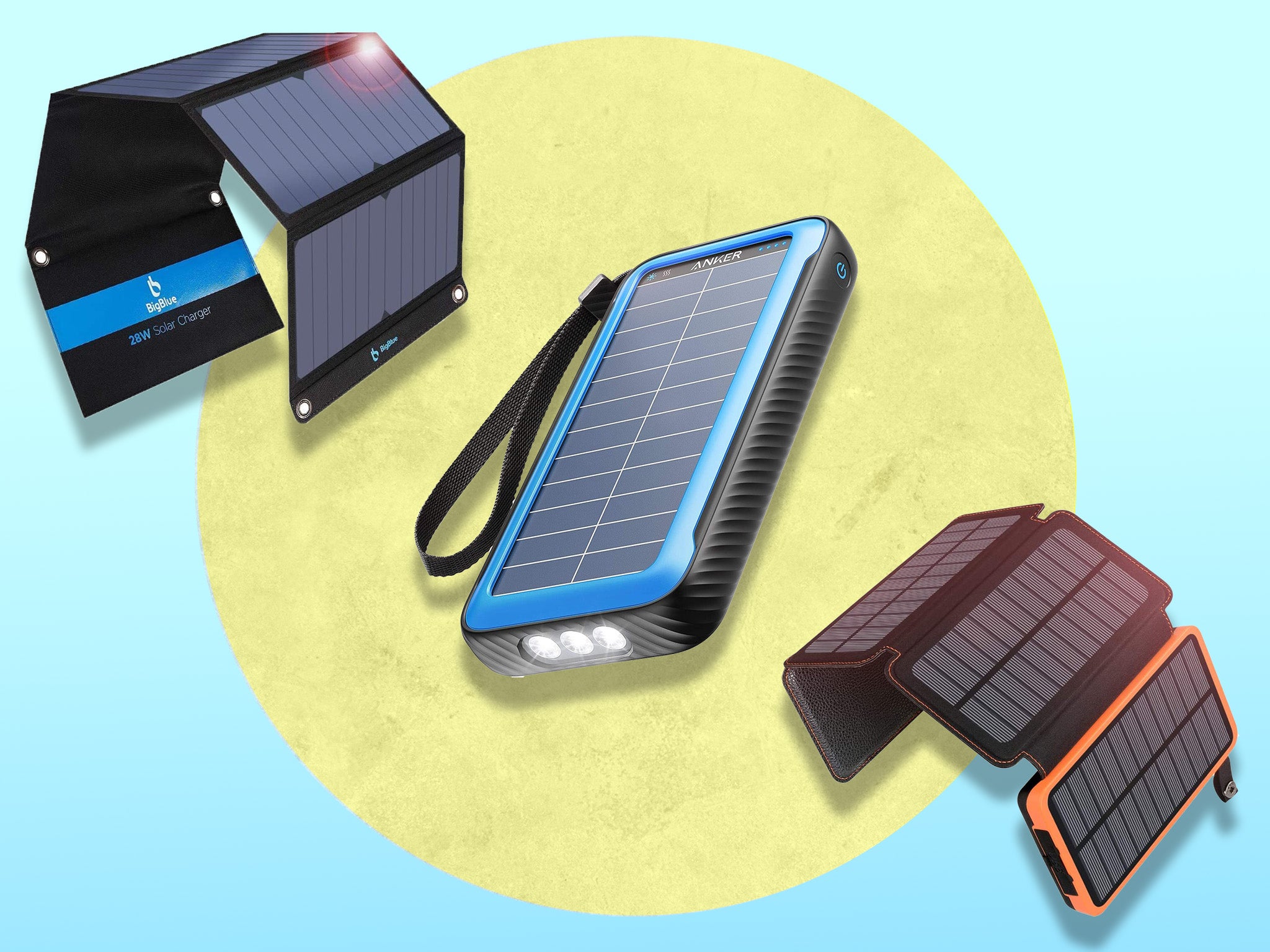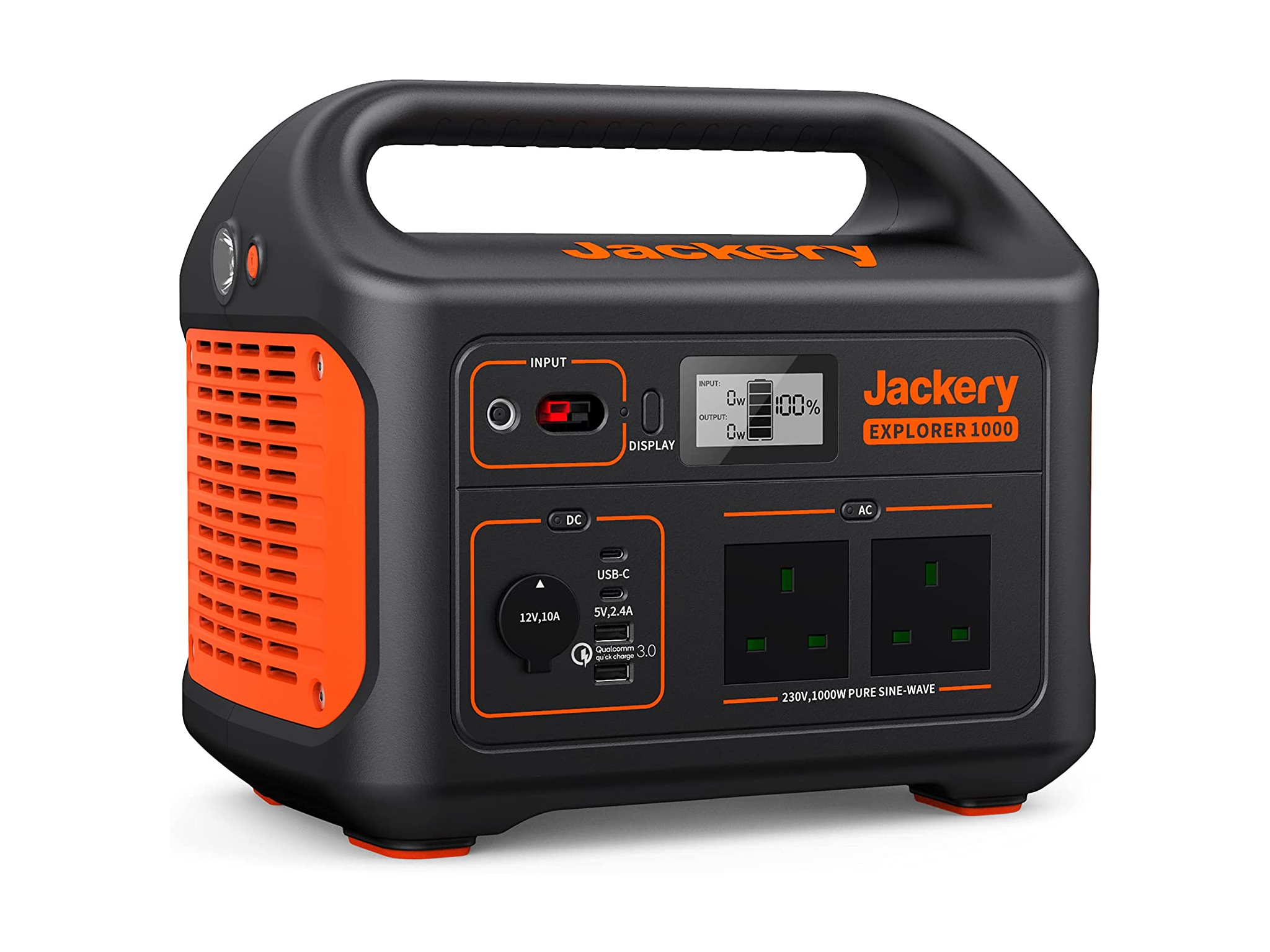
The Independent's journalism is supported by our readers. When you purchase through links on our site, we may earn commission. Why trust us?
The best portable power stations for camping off-grid and dealing with power cuts
Whether you’re planning a road trip or need emergency backup power, these will keep you charged up
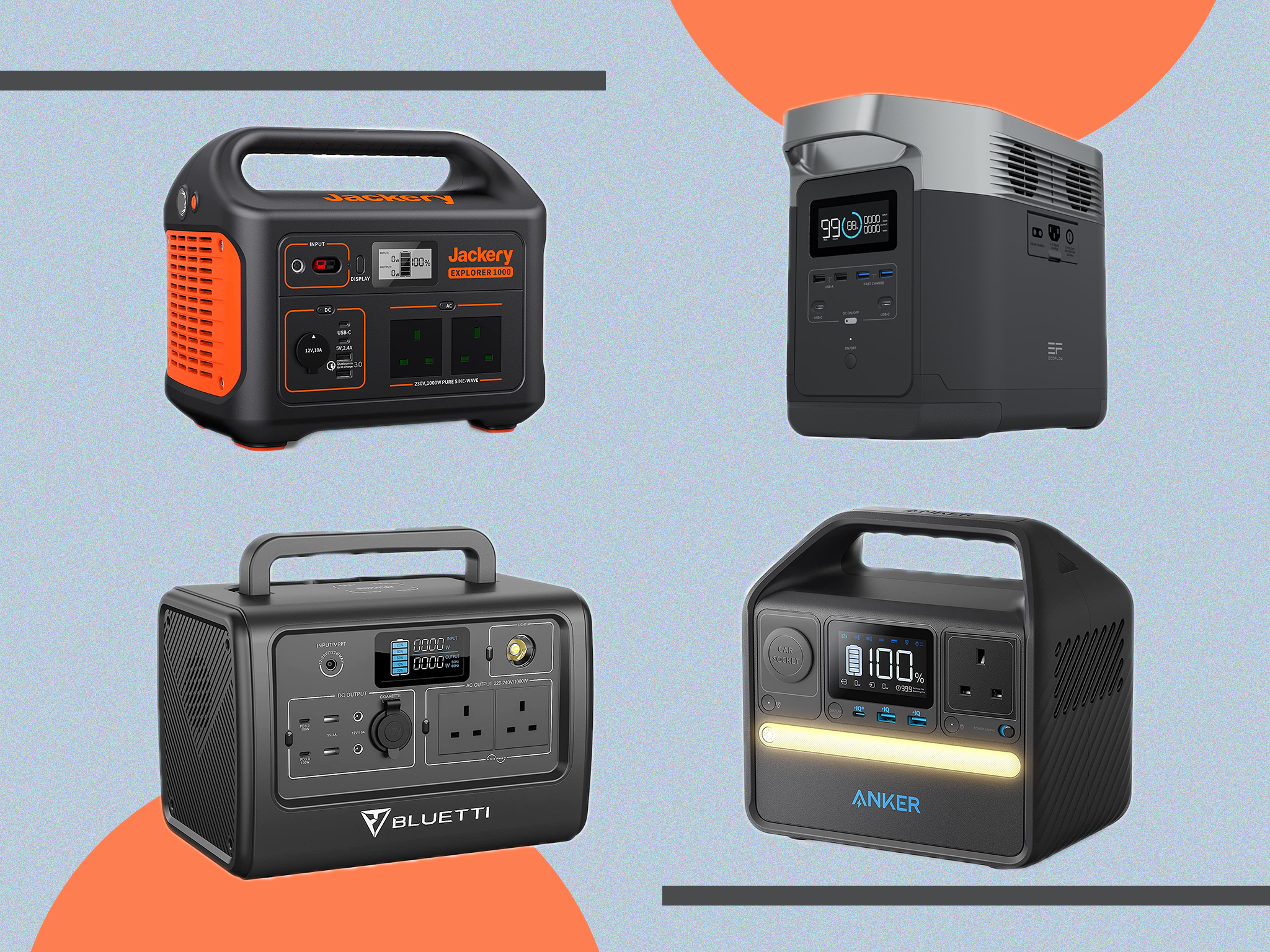
A portable power station is essentially a giant battery pack, big enough to charge multiple devices and keep your home’s essential appliances running for hours during a power cut. Because they can be charged up using solar panels, they can be a cheaper alternative to using mains power, especially now that energy costs are going through the roof.
But while you might be looking for a way to cut down your electricity bills, keep in mind that even the best portable power stations are limited by their capacity. These portable power stations are perfect for providing emergency backup power in case of a blackout, or for powering up your gadgets on a remote camping holiday, but even the biggest models hold less than a couple of quid’s worth of electricity at a time.
Still, a good portable power station can keep vital appliances such as your fridge, freezer or any important medical equipment running for up to an entire day off-grid, giving you peace of mind if the power goes. Even a cheap power station is enough to run things such as televisions, outdoor lights and portable projectors – making them just as useful for hosting garden parties as navigating the looming energy crisis.
So, what do you need to look out for when shopping for portable power? The two main specifications are capacity and output. To over-simplify it: capacity (measured in Wh, or watt hours) is the amount of energy the power station’s battery can store. Output (measured in W, or watts) is how much energy it can provide at any moment. Our list includes power stations ranging from 200W (enough to run a laptop) to 1,800W (enough to run a portable air conditioner).
You should also double check the portable power station you’re buying is the right one for your region. Most are designed with UK, European or US sockets, and aren’t universally compatible with other regions. Every station in our list is built for the UK and can be recharged using solar panels, so if you already own a portable solar charger, it’s worth checking the connection type, to make sure it’s compatible.
How we tested:
We tested these portable power stations while travelling and at home, paying close attention to how they performed under different conditions and with an array of increasingly energy-hungry appliances and electronics, from phone chargers and laptops to hair dryers and travel kettles. We considered a range of factors, from recharge times, inverter efficency and battery capacity, to safety features such as automatic shut down.
The best portable power stations in 2022 are:
- Best overall – Jackery explorer 1000: £734.30, Amazon.co.uk
- Best power output – Ecoflow delta: £1,299, Ecoflow.com
- Best budget power station – Anker 521 powerhouse: £249, Amazon.co.uk
- Best lightweight power station – Bluetti EB70: £549.06, Amazon.co.uk
- Best for off-grid energy – Anker 757 powerhouse: £1,099, Amazon.co.uk
Jackery Explorer 1000

- Best: Overall
- Capacity: 1,000W / 1,000Wh
- Weight: 10kg
- Ports: USB-C, USB-A, standard UK plug
- Why we love it
- Great power output
- Rugged design
- Take note
- Expensive
Jackery was founded in California in 2012 by an ex-Apple engineer, and it soon established itself as one of the leading names in outdoor power generation – and with good reason. The stylish black-and-orange Jackery explorer 1000 is the best all-round portable power station we’ve tested.
The hefty 1,000W power output can comfortably handle recharging high-draw tech such as laptops and phones dozens of times over, but it’s also got enough capacity for running larger home appliances such as refrigerators for 10-14 hours – all while remaining portable at just 10kg.
There is a plethora of connections – from USB ports to a pair of standard three-pin plug sockets – to ensure complete compatibility with electronics inside and outside the home. A pure-sine wave converter replicates the alternating current of the UK power grid, meaning appliances will behave just as they would if they were plugged into the mains. This conversion comes at the expense of efficiency, but the Jackery explorer 1000 is one of the more efficient generators on the market.
The explorer 1000 can be bought as part of the Jackery solar generator 1000 package (£1,637.99, Jackery.com), a fully off-grid solution that includes two 100W solar panels capable of recharging the station to full. This takes as little as eight hours in direct Californian sunshine, but in the UK it might take days.
Ecoflow delta portable power station
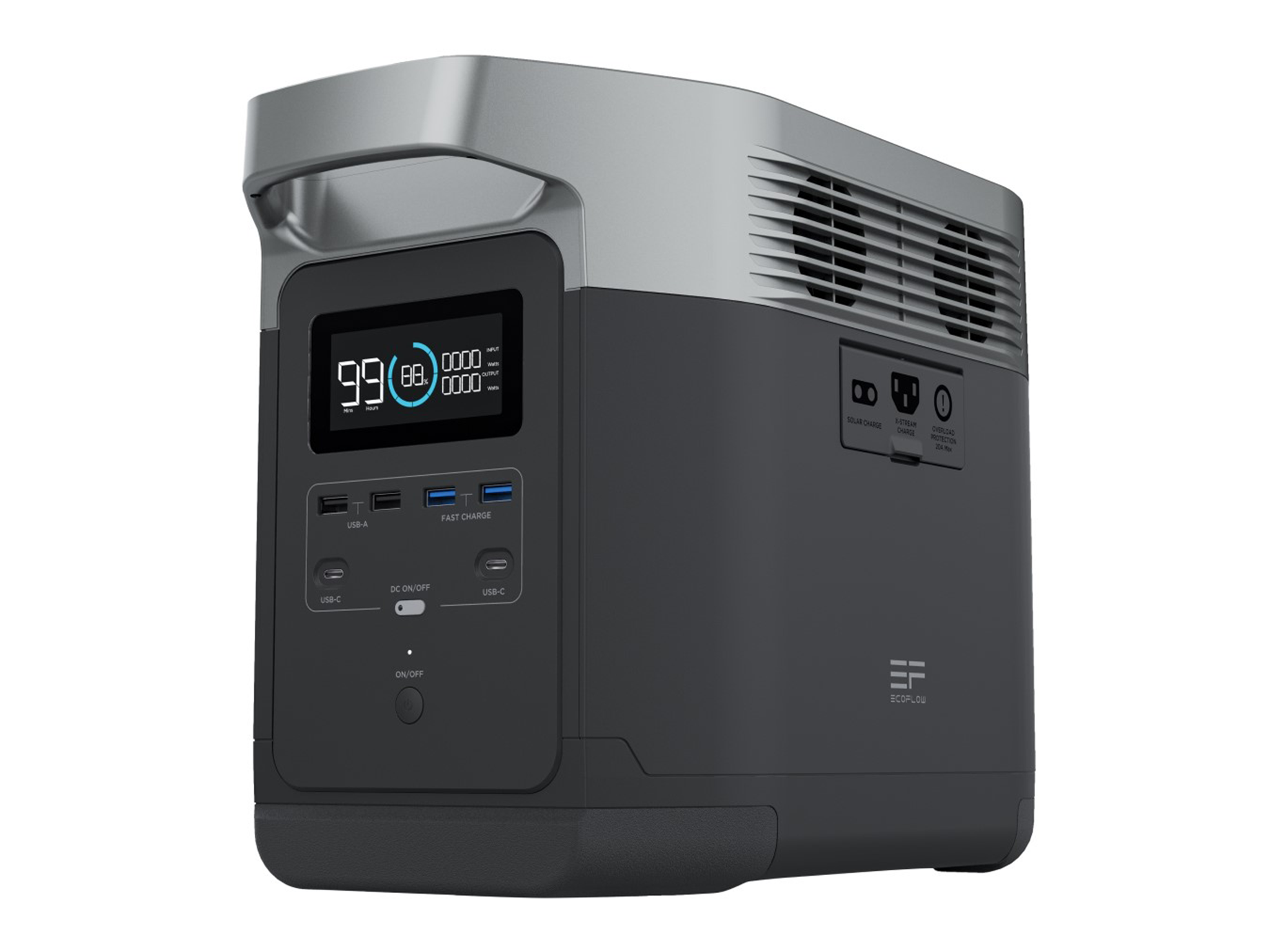
- Best: Power output
- Capacity: 1,800W / 1,260Wh
- Weight: 14kg
- Ports: Four USB-As, two USB-Cs, four UK mains plugs, 12V car port
- Why we love it
- Very powerful
- Speedy recharging
- Take note
- Expensive
The highest power output of any of the portable power stations in our list, the Ecoflow delta kicks out an impressive 1,800W – as much as some small petrol generators. That output is shared across the delta’s generous range of connections: no fewer than four USB-A ports (two of which are fast-charging), two USB-C ports and four UK plug sockets.
Should the worst-case scenario come to pass this winter, and we’re faced with potential blackouts or energy rationing, the delta’s 1,260Wh battery capacity will keep large appliances ticking over when mains power isn’t available. A 150W fridge can be powered for up to 10 hours, for example, making it a great choice for emergency backup power.
The Ecoflow delta’s standout feature is its fast recharge time. The power station can be charged to full in just 1.6 hours, using mains power, and like the Jackery model above can be packaged with a bifacial 220W solar panel (£549, Hampshiregenerators.co.uk) to deliver endless free energy when camping or caravanning (British weather permitting).
Anker 521 powerhouse
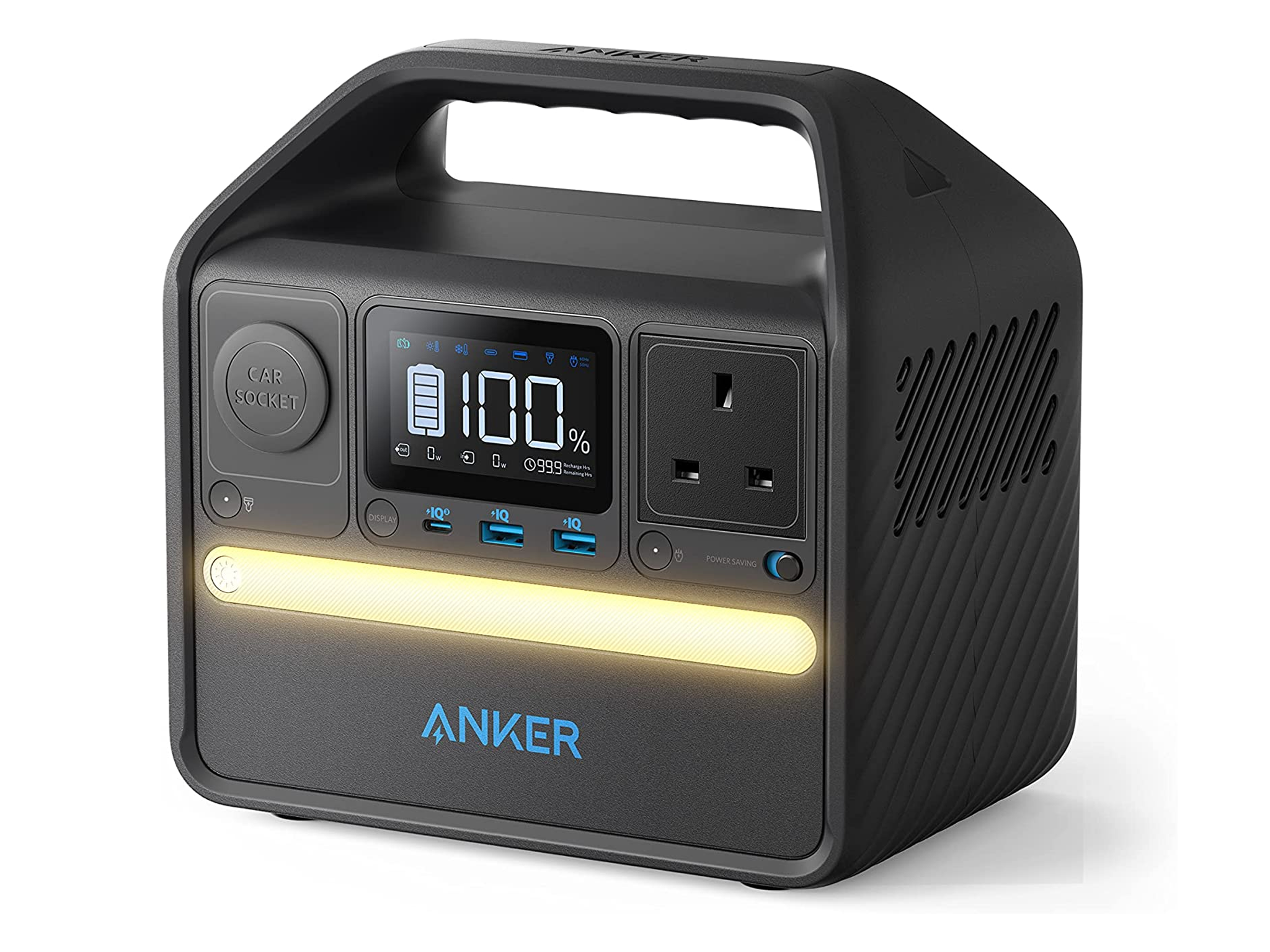
- Best: Budget power station
- Capacity: 200W / 256Wh
- Weight: 4.3kg
- Ports: Two USB-As, one USB-C, one UK mains plug, 12V car port
- Why we love it
- Ten-year battery lifetime
- Five-year warranty
- Super portable
- Take note
- Relatively low power output
This 200W outdoor generator from Anker produces just a fifth of the power of the next most powerful station in our list, but that means it can stay small, lightweight, quiet and super portable. The Anker 521 powerhouse is an ideal travel companion for recharging phones and cameras and running small appliances when you’re miles away from mains power, but its built-in striplight, three-pin plug and 256Wh battery pack make it a useful piece of kit at home too, should you ever lose power unexpectedly.
That 200W output is enough to juice up laptops and other devices using USB-C fast charging, and the capacious battery can be recharged to full in around two and a half hours. The LiFePo4 battery technology – a cut above regular lithium-ion battery tech – is rated to last for a decade, with sustained use, and the station comes with a five-year warranty
Like other entries in our list, the Anker 521 can be recharged using mains power or any standard solar charger.
Bluetti EB70 power station
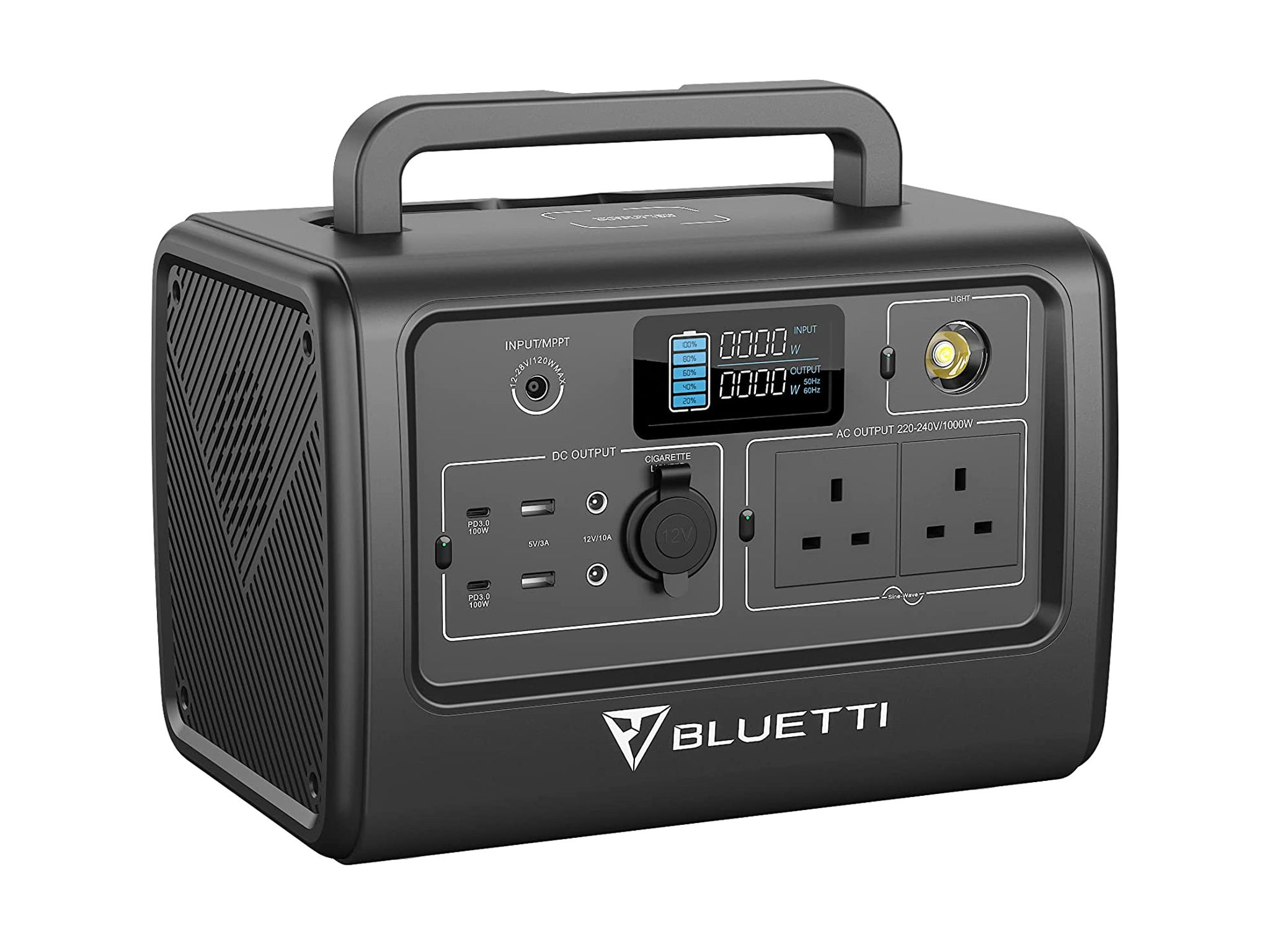
- Best: Lightweight power station
- Capacity : 1,000W / 712Wh
- Weight: 9.7kg
- Ports: Two USB-As, two USB-Cs, two UK mains plugs, two DC 5521s, 15W wireless charging
- Why we love it
- Great value for money
- Long-lasting LiFePo4 battery tech
- Wireless charging pad
- Take note
- Lower capacity
The Bluetti EB70 has the best price-to-wattage ratio of any of the portable power stations we’ve tested, and uses long-lasting LiFePo4 technology that promises no noticeable deterioration of battery cell performance for at least 2,500 charge cycles.
The 716Wh capacity is a little less than you’ll get with the more-expensive Jackery and Ecoflow models included in this round-up, but that slimmer battery size leaves the EB70 lighter, easier to take on road trips, and faster to recharge. Using mains power, it can be charged in around four hours.
Connectivity is great. You’ve got your essential USB ports for juicing up your devices, and a pair of three-pin sockets with an AC inverter for delivering mains-style power off-grid. The EB70 can run any appliances rated 1,000W or below, such as a fridge, laptop, PC, outdoor projector, TV or lights.
It’s also got a 15W wireless charging pad built into the top of the station, a small addition that could be a lifesaver if you’ve lost your charging cable.
Anker 757 powerhouse
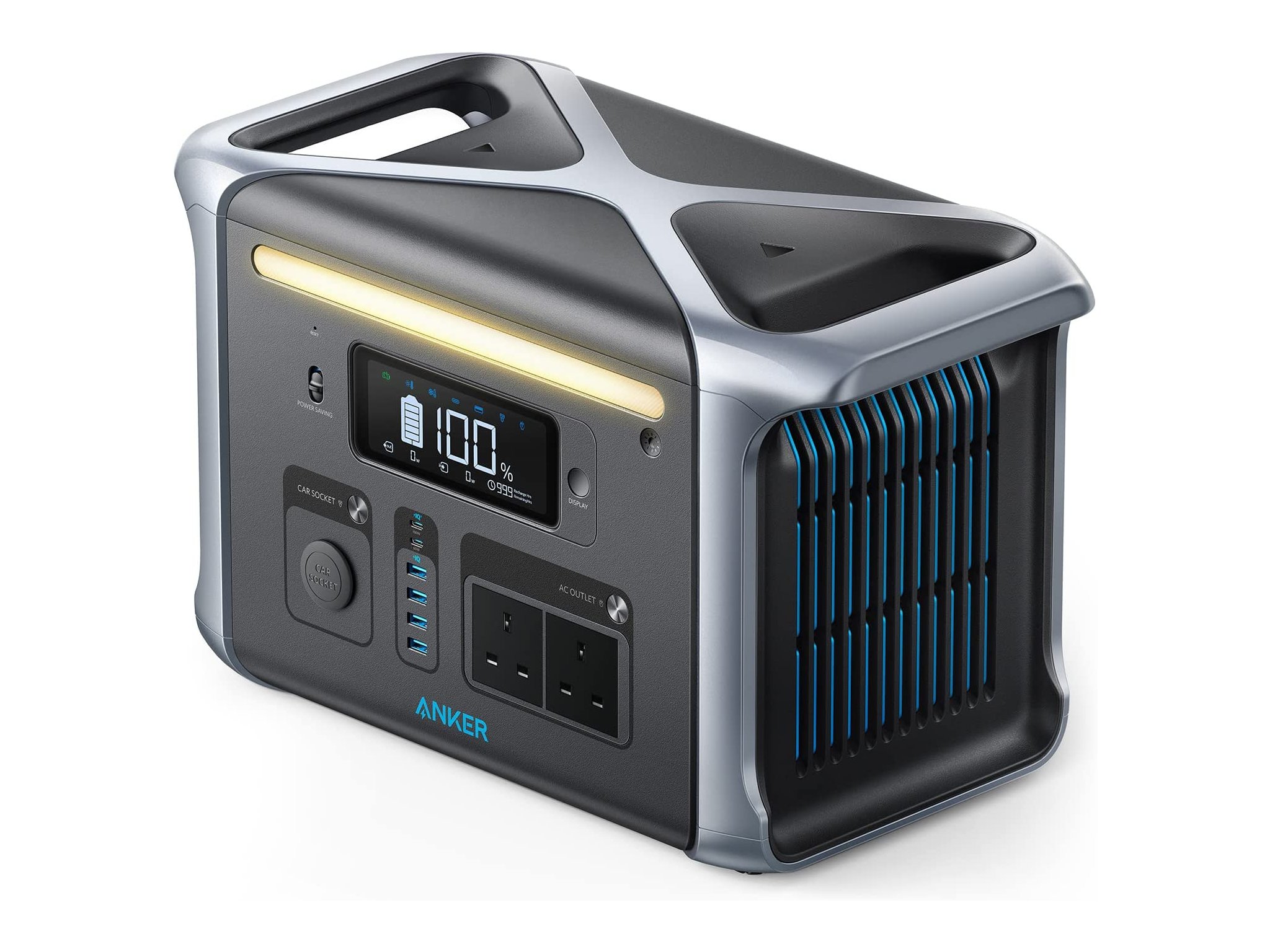
- Best: For off-grid energy
- Capacity: 1,500W / 1,229Wh
- Weight: 19.9kg
- Ports: Four USB-As, two USB-Cs, two UK mains plugs, 12V car port
- Why we love it
- Great power output
- Five-year warranty
- Durable LiFePo4 battery tech
- Take note
- Heavy
The smaller Anker 521 is all about portability but, at the opposite end of the range, the Anker 757 is all about power. The 1,500W output is enough to handle all but the most energy-hungry equipment, whether camping or at home, and the long-lasting LiFePo4 1,229Wh battery capacity can recharge phones and laptops dozens of times over before the unit itself needs to be recharged.
For home use, the continuous 1,500W output and 2,400W surge power means you can keep essential appliances such as your freezer and microwave running during a blackout, while simultaneously powering your TV and wifi router.
The verdict: Portable power stations
For its outstanding all-round performance, our pick of the portable power stations is the Jackery explorer 1000. Rugged, smartly designed, and humming with a generous 1,000W of output, it can comfortably power most portable appliances as well as TVs, fridges and microwaves for hours.
If you need something simpler, the Anker 521 powerhouse is a great emergency power source in a pinch, and can keep laptops, phones and other electronics ticking over, whether you’re without power at home or road tripping in the wilderness.
Looking for a new smartphone? We’ve rounded up the best phones of 2022 from Apple, Samsung and more

